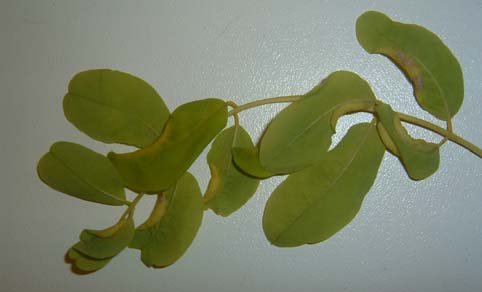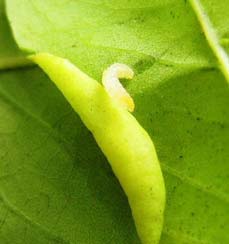PESTS AND DISEASES OF FORESTRY IN NEW ZEALAND
New insect on Robinia, Obolodiplosis robiniae
Scion is the leading provider of forest-related knowledge in New Zealand
Formerly known as the Forest Research Institute, Scion has been a leader in research relating to forest health for over 50 years. The Rotorua-based Crown Research Institute continues to provide science that will protect all forests from damage caused by insect pests, pathogens and weeds. The information presented below arises from these research activities.
From Forest Health News 195, May/June 2009.


The latest issue of Biosecurity (92, June 2009) recorded the presence of Obolodiplosis robiniae (Cecidomyiidae) in the New Zealand for the first time. Samples were collected during the course of high risk site surveillance in March and April this year.
The insect, which is native to eastern North America, forms leaf margin roll galls on Robinia pseudoacacia. The midge was reported from Japan and South Korea in 2002 and from Europe in 2003 where it is now quite widespread. In some parts of Europe damage can be quite severe; more than two galls per leaflet can result in premature leaf drop. For further information see:
http://hrcak.srce.hr/ index.php?show=clanak&id_clanak_jezik=57330
John Bain
This information is intended for general interest only. It is not intended to be a substitute for specific specialist advice on any matter and should not be relied on for that purpose. Scion will not be liable for any direct, indirect, incidental, special, consequential or exemplary damages, loss of profits, or any other intangible losses that result from using the information provided on this site.
(Scion is the trading name of the New Zealand Forest Research Institute Limited.)

 Farm Forestry New Zealand
Farm Forestry New Zealand

